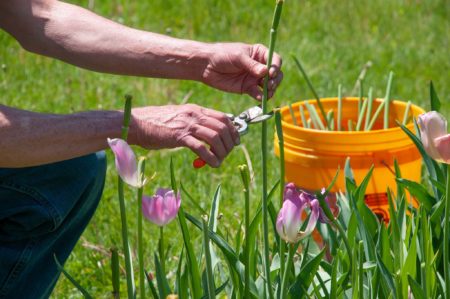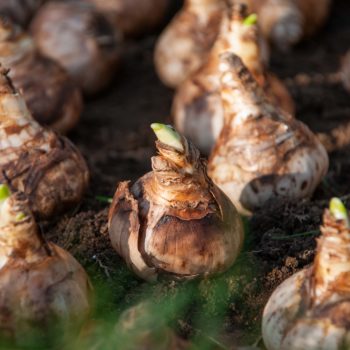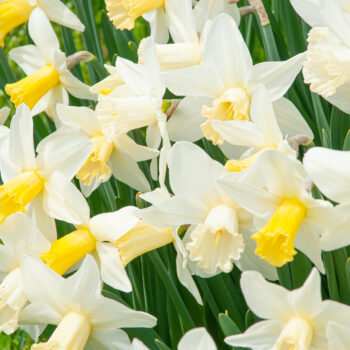
Tulips are not good perennials. They flower lavishly the first spring after planting, but in subsequent springs, flowering is generally sparse and uneven. To ensure a great display every year, many gardeners and landscape contractors treat tulips as annuals, lifting and discarding the bulbs after they flower.
This said, there are some tulips that have the ability to come back and bloom reasonably well for a second spring, maybe even a third. You can see a selection of these tulips on our Perennial Tulips page.
Having selected a tulip with perennial potential, there are several things you can do to encourage it to deliver on its promise.
Plant the bulbs in a sunny location.
The foliage needs access to sunshine before, during, and after bloom to store up the energy required to flower again the following spring.
Plant the bulbs in soil that drains well.
Tulips do not perform well in heavy, wet soil.
Remove the spent flowers as soon as the bulbs finish blooming.
Cutting or snapping off the top few inches of the flower stem prevents seed formation and focuses energy instead on bulb growth. For a neater look, use pruning shears to remove the flower stem down to the first leaf.
Allow the foliage to yellow and wither completely before you remove it.
After tulips flower, their foliage stays green for three or four weeks, then turns yellow and finally tan as the bulbs enter their summer dormancy. You must let this process occur at its own pace. If you cut the foliage while it is still green, you reduce the amount of time the bulbs have to capture and store the energy needed to flower next year.
Avoid summer irrigation.
Tulips prefer to be dry during their dormancy. They come from parts of the world that receive very little rainfall during summer. In constantly moist soil, tulip bulbs are prone to rot.
Here’s a final note: Colorblends guarantees that its bulbs will flower the first spring after planting. Perennial tulips have the ability to come back and flower again in future springs, but we do not guarantee it. Even if you follow the suggestions provided above, perennial tulips may not perform as well as you might wish. That’s just how it is with tulips. They are not dependable after the first spring. To learn more about why tulips do not perennialize, see our Perennial Tulips article.


